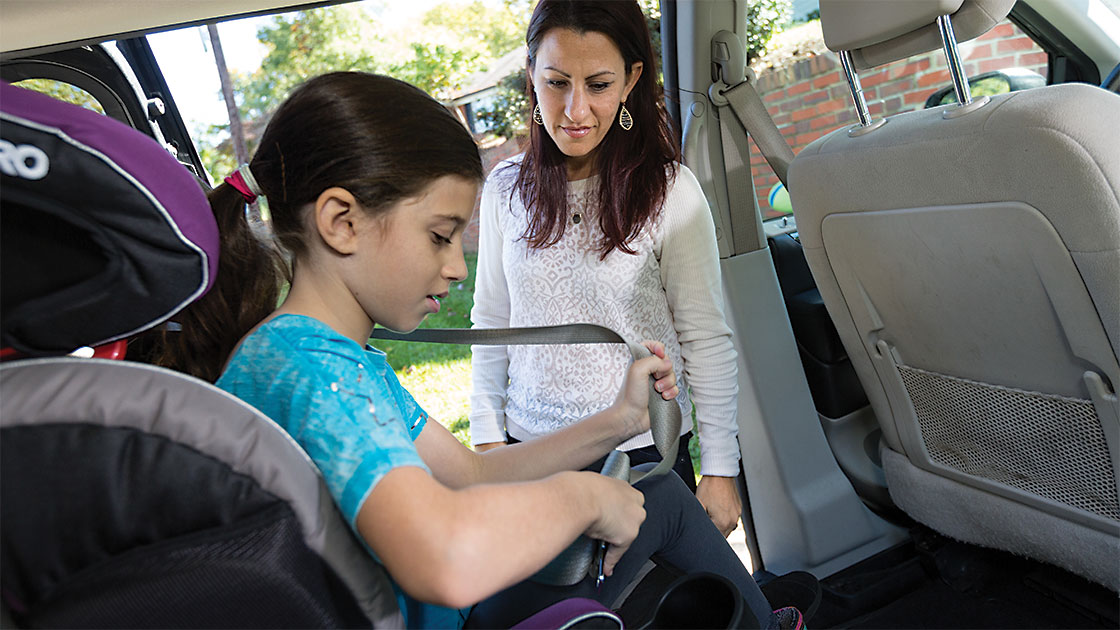Many kids using safety belts should ride in booster seats
November 6, 2014

Deciding when to switch a child from a booster seat to an adult safety belt alone is still confusing for many parents. In a national online survey of 1,000 parents of booster-age children, 9 of 10 parents had moved their child out of a booster seat before they were big enough for belts.
The Safe Kids Worldwide survey found 7 of 10 parents of children 4 to 10 years old didn't know that a child should be at least 4 feet 9 inches tall to ride in a car using a safety belt without a booster seat.
When asked what was the deciding factor in moving their child out of a booster seat to a lap/shoulder belt, 56 percent of parents cited reasons other than height and weight. These included state laws, their child's comfort and their spouse's opinion.
Carpools are especially tricky for some parents, Safe Kids found. One in five parents whose children carpool say they "bend the rules" when they drive, allowing children to ride without belts or without the booster or child restraint they would normally use. Two-thirds of parents say they notice other carpool drivers bending the rules, too. What's more, 21 percent of parents of children who carpool at least one day a week say they rarely or never talk to the other people driving the carpool about the type of restraint their own child uses.
"We found there's a need to remind parents, and anyone who drives a child, about the importance of using a booster seat until a seat belt alone fits safely," says Kate Carr, president and chief executive of Safe Kids Worldwide. "Here's an easy tip: A child needs to be at least 57 inches tall and between 80 and 100 pounds to ride with just a seat belt."
Parents are advised to keep children up to age 13 in the back seat, but 16 percent of parents in the survey said their child sometimes rides in the front seat. Reasons parents gave for letting children ride in front included short trips (28 percent), single passenger (20 percent) and when the back seat is full (19 percent).
Kids too big for child restraints should use a belt-positioning booster in the back seat until adult safety belts fit properly. Some boosters provide better belt fit than others. The shoulder belt should fit snug across the center of the shoulder and not across the neck or face or slipping off the shoulder. The lap belt should lie flat across the upper thighs and not on the tummy.
To use a safety belt, the National Highway Traffic Safety Administration recommends that children should be able to keep their back against the seat, with their knees naturally bent over the seat edge and their feet flat on the floor.
Every state and the District of Columbia has a child restraint law, but these differ when it comes to booster-age children and don't always reflect best practices recommended by the American Academy of Pediatrics. The age at which belts can be used instead of child restraints differs among the states. In 30 states and D.C., child restraint laws cover children until their 8th birthday, with exceptions for kids who are big for their ages. Wyoming and Tennessee require boosters to age 9.